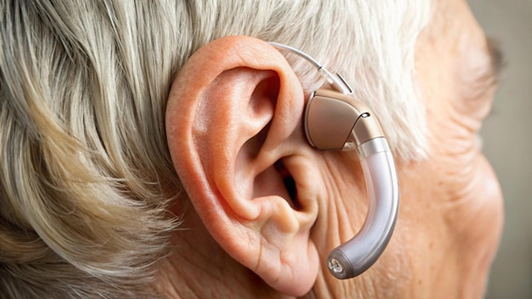Are you struggling with hearing loss and unsure which hearing aid to choose? Comprehensive hearing tests are essential to identifying the extent of your hearing loss and its specific frequencies. With this information, you can better explore options, from behind-the-ear to in-ear styles, and features like rechargeability and wireless connectivity to find the best fit for your needs.
Understanding The Importance Of Comprehensive Hearing Tests
Comprehensive hearing tests are vital for anyone experiencing hearing difficulties. They assess your auditory capabilities, providing insights into the nature and extent of your hearing impairment. This understanding allows healthcare professionals to recommend personalized solutions like hearing aids or assistive devices. These tests offer a complete hearing evaluation and can identify underlying medical conditions, ensuring a holistic approach to your health. Regular monitoring helps track changes, enabling timely adjustments to maintain optimal hearing and enhance your daily interactions and overall well-being.
Common Signs Of Hearing Loss
Recognizing the signs of hearing loss is essential for improving your quality of life. Common symptoms include frequently asking others to repeat themselves, struggling to understand conversations in noisy environments, and feeling disconnected in social situations. Additional signs may include perceiving others as mumbling, turning up the volume on devices, or experiencing ringing in the ears (tinnitus). Early intervention is key, so if you or a loved one notice these symptoms, consult a healthcare professional for a comprehensive hearing test and expert guidance on the next steps.
The Benefits Of Early Detection And Intervention
Early detection of hearing loss offers numerous benefits, including improved communication, reduced isolation, and better cognitive function. Identifying hearing loss early allows individuals to engage more effectively in conversations and social activities, decreasing the risk of depression. It also helps preserve cognitive abilities, as untreated hearing loss can contribute to cognitive decline. Furthermore, early intervention enables individuals to choose the right hearing aid, leading to a better fit and more effective hearing experience. This proactive approach maximizes the benefits of hearing aids and enhances overall satisfaction.
What To Expect During A Comprehensive Hearing Test
A comprehensive hearing test starts with a consultation where the audiologist reviews your medical history and symptoms to determine the appropriate tests. Standard tests include pure-tone audiometry, where you listen to tones to create an audiogram showing your hearing thresholds. Additional tests may assess speech recognition, middle ear function, and auditory processing. Afterward, the audiologist will review the results and recommend the best options for your hearing needs.
Different Types Of Hearing Tests Available
Several hearing tests are designed to assess different aspects of auditory function. Pure-tone audiometry, the most common test, measures the faintest sounds a person can hear at various frequencies to determine hearing thresholds and the degree of hearing loss. Speech audiometry evaluates how well someone understands spoken words at different volume levels, helping audiologists recommend hearing aids that enhance speech clarity. Tympanometry assesses middle ear function by measuring eardrum movement in response to air pressure changes, identifying issues like fluid buildup or eustachian tube dysfunction that may need medical attention before fitting a hearing aid.
Interpreting The Results Of A Hearing Test
After completing your comprehensive hearing tests, interpreting the results is crucial. The audiologist will provide an audiogram, a graph that shows your hearing thresholds across various frequencies. The horizontal axis represents frequency (measured in Hertz), while the vertical axis shows hearing level (measured in decibels). The audiogram helps identify the type and degree of hearing loss. A “normal” range is 0-25 dB, mild loss is 26-40 dB, and more severe loss is indicated by higher thresholds. Understanding these results allows you and your audiologist to explore interventions, like hearing aids, tailored to your needs for better hearing.
The Role Of A Hearing Healthcare Professional In Recommending The Right Hearing Aid
A hearing healthcare professional is essential in finding the right hearing aid. After conducting comprehensive tests, the audiologist will offer personalized recommendations based on your hearing loss, lifestyle, and preferences. They will discuss various hearing aid types, their features, benefits, and limitations, considering factors like severity, daily activities, and budget. The audiologist will guide you through the fitting process, ensuring comfort and effectiveness while providing instructions for use and care. Follow-up appointments will help adjust the settings, ensuring you get the maximum benefit from your hearing aids.
Factors To Consider When Choosing A Hearing Aid
Selecting the right hearing aid involves considering factors like type, technology, and maintenance. Behind-the-ear (BTE) models are user-friendly, while in-the-ear (ITE) options are more discreet. Advanced features like noise reduction, speech enhancement, and wireless connectivity improve listening in noisy environments. Discuss these with your audiologist to find the best fit. Also, consider battery life and maintenance—some hearing aids use traditional batteries, while others offer rechargeable options for convenience and cost-effectiveness.
The Different Types Of Hearing Aids Available
Hearing aids come in various types to suit different hearing needs. Behind-the-ear (BTE) models offer strong amplification, while in-the-ear (ITE) devices are more discreet and have added features like volume controls. Completely in-canal(CIC) aids are nearly invisible but have limited features and battery life. Smart hearing aids with Bluetooth allow streaming from smartphones and app-based adjustments, enhancing the listening experience and keeping you connected in the digital age.
Conclusion: Finding The Right Hearing Aid For Your Needs
Finding the right hearing aid is key to improving your hearing and quality of life. It starts with comprehensive hearing tests that offer insights into your auditory health. Recognizing the signs of hearing loss and working with a qualified professional helps you understand your results and select the best device for your needs.
Consider factors like device type, features, and maintenance to make informed decisions. The right hearing aid can significantly enhance your experience, helping you reconnect with the world. Take the first step today by scheduling your hearing test and improving your hearing health.




